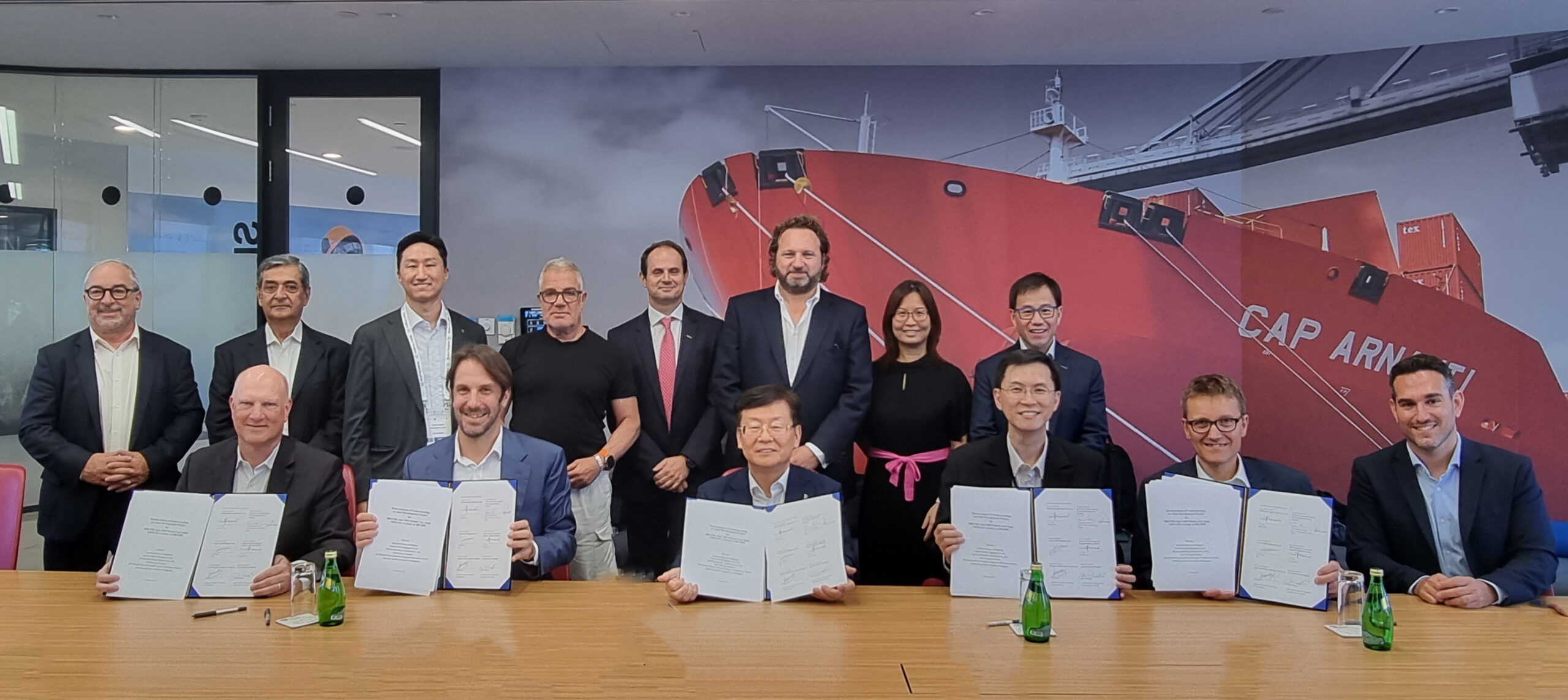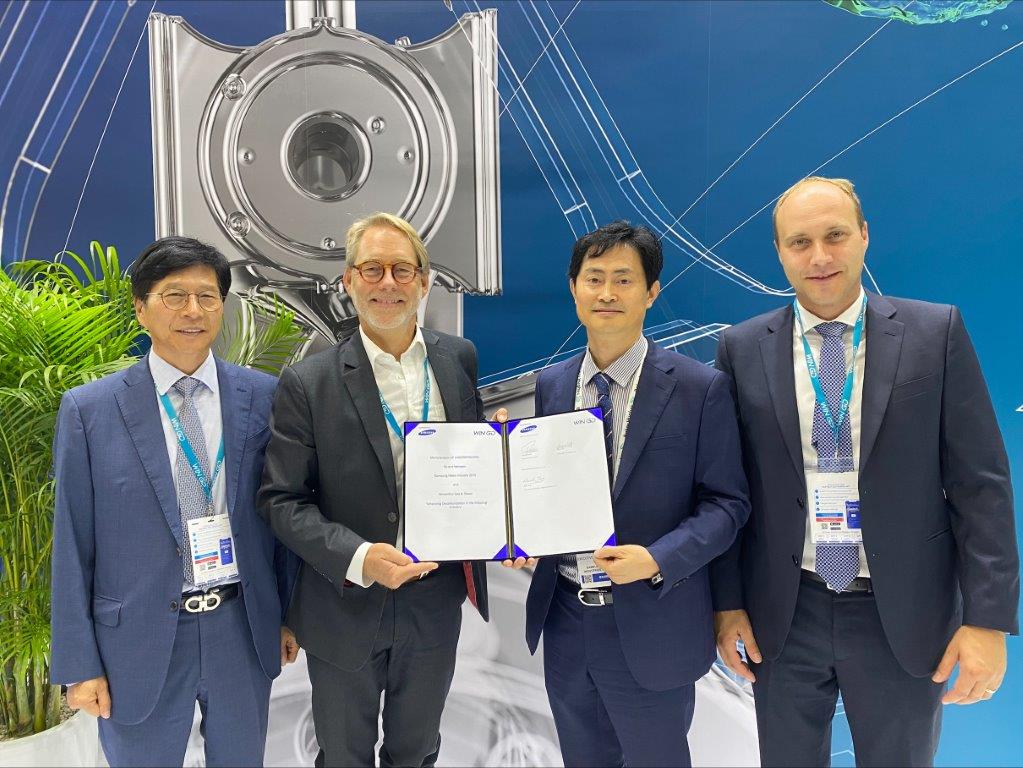Burning ammonia can lead to different types of emissions. A new report indicates they are no deal-breaker for ammonia-powered ships, but reducing them to acceptable levels will require a variety of technological approaches.
By Hanno Böck
Clean ammonia is considered a promising fuel option for the future of shipping. Burning ammonia produces no carbon dioxide, as it does not contain carbon. When made cleanly, for example by using electrolysis and green hydrogen, ammonia can provide a fuel without carbon emissions. However, there are other emissions to consider.
The Mærsk Mc-Kinney Møller Center for Zero Carbon Shipping recently published a report about these emissions and potential solutions and organized a webinar where it presented the results. It does not see any significant showstoppers, but considerable technical challenges exist in managing emissions from ammonia-powered engines.
Three types of emissions are of concern. First, there is ammonia itself. Incomplete combustion, as well as venting operations and other gas releases in handling ammonia, can lead to ammonia emissions. It is a highly toxic gas and, therefore, a health risk.
The second emission of concern is the production of NOx gases during combustion. These can be a health risk and are not something exclusive to ammonia engines. All combustion processes can cause reactions that produce NOx chemicals.
And finally, burning ammonia can cause N₂O, also called nitrous oxide or laughing gas, which is itself a powerful greenhouse gas. Over a 100-year timeframe, N₂O causes 260 times as much global warming as the same amount of carbon dioxide.
N₂O is the elephant in the room
Given that the goal of ammonia engines is to reduce climate impact, it is obvious that this would not make sense if high amounts of N₂O emissions offset all the benefits of avoiding CO2. Giorgio Guadagna from the company Stold Tankers, who was one of the report’s authors, said in the presentation: “The real elephant in the room when it comes to ammonia combustion is N₂O.”
Both NOx and N₂O emissions can be avoided by SCR technology (selective catalytic reduction). SCRs today usually use urea as a catalyst, but that could be replaced by ammonia itself – because that’s obviously available on an ammonia-powered ship.
“We have been developing catalysts for N₂O or laughing gas treatment for the past eight years,” said Janus Münster-Swendsen from the company Topsoe during the webinar. ”Not specifically targetting ammonia-fuelled engines, but for other industries.”
The catalysts to remove N₂O have higher temperatures compared to pure NOx removal. Existing solutions use temperatures of more than 400 °C, which, according to Münster-Swendsen, is likely too high for ship engines.
Engine design could avoid most or all N₂O emissions
Removing N₂O from the exhaust emissions may not always be necessary. Nikolaos Kourtidis from MAN Energy Solutions thinks that it will be possible to avoid N₂O in the engine itself: “We actually expect that there will be no nitrous oxide produced during combustion and that will be achieved by engine tuning.” MAN is developing a two-stroke ammonia engine at its research center in Copenhagen, Denmark.
For the ammonia emissions that can happen during the fuel handling, for example via venting operations, a water catcher system can be installed. During the discussion, the question came up about how to handle the contaminated water produced by such methods.
According to Nikolaos Kourtidis from MAN, it is currently unclear how much of such wastewater may be generated due to lack of experience, nor does a regulatory framework exist for handling it.
“We are looking at having a tank on board that can then be emptied and disposed at shore”, said Kaj Portin from the engine maker Wärtsilä. He also mentions Wärtsilä discussed an option that may be more controversial: Putting it back into the sea in small quantities. “It’s a fertilizer. I don’t know if it’s good to put fertilizer in the ocean, but it’s not damaging anything immediately.”
Pilot and helper fuels cause carbon dioxide emissions
Apart from the emissions caused by ammonia combustion, another issue was highlighted during the webinar: It is difficult to ignite ammonia, and it burns relatively slowly. Therefore, engine makers expect that they cannot exclusively burn ammonia in an engine. A pilot fuel will likely be needed to start the engine, and depending on the engine type, also a helper fuel during combustion.
This can be traditional Diesel, however, that of course comes with carbon dioxide emissions. Alternatives could be synthetic or biodiesel. According to Kourtidis, MAN’s two-stroke engines could use around five percent pilot fuel.
Wärtsilä, which currently develops a four-stroke ammonia engine, expects the need for up to 30 percent pilot and helper fuel. “We have run up to 92% ammonia, but I would at least yet not sell those engines”, said Kaj Portin from Wärtsilä.
The engine maker also considers using hydrogen as a helper fuel in combination with an ammonia cracker. The cracker would convert some of the ammonia into nitrogen and hydrogen. The latter can then be mixed into the process and improve the combustion properties.
“With industry-wide collaboration during engine and emission management technology development and ammonia-fueled vessel design, ammonia emission risks should not be a showstopper for the ammonia-based fuel pathways,” is one of the conclusions of the report by the Mærsk Mc-Kinney Møller Center for Zero Carbon Shipping.
However, it is also clear that emissions are not the only challenge for ammonia-powered shipping. Another major aspect is safety due to ammonia’s high toxicity. According to Giorgio Guadagna, this was not part of the scope of this report, but the center has another project that investigates safety.
Other future fuel news and announcements on Fathom World
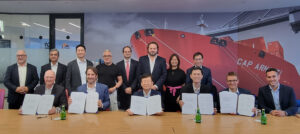
ABS joins landmark project for dual-fuel Ammonia carrier
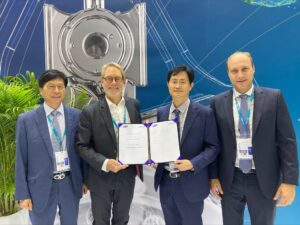
WinGD and Samsung Heavy Industries to cooperate on future fuel applications

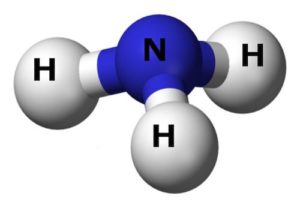
WinGD on track to deliver ammonia engines in 2025

ABS Issues AIP for new Ammonia-fuelled container ship

































